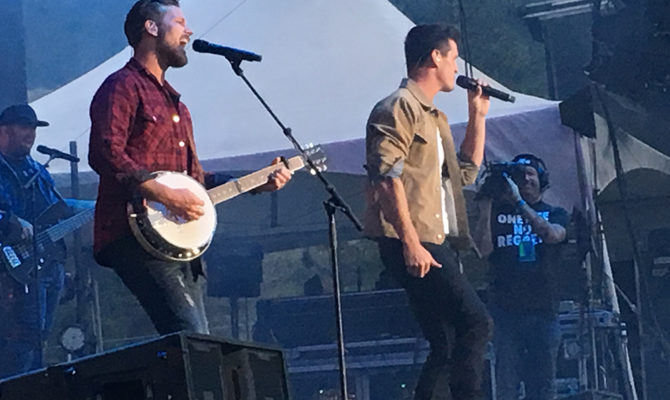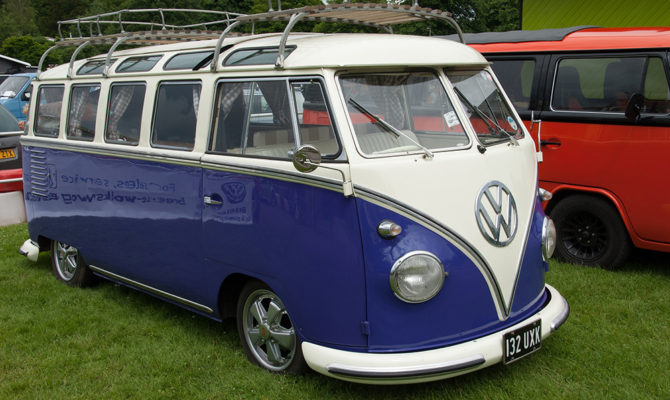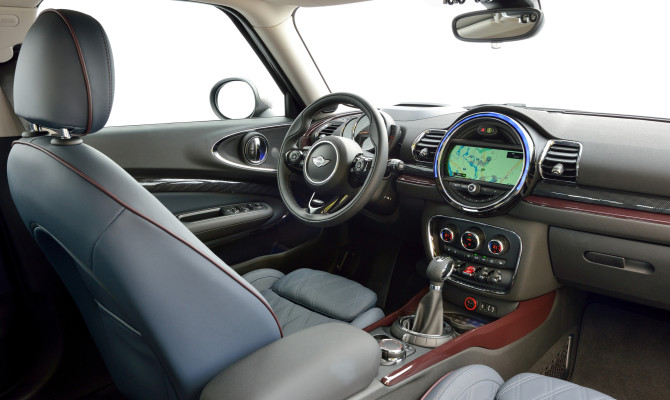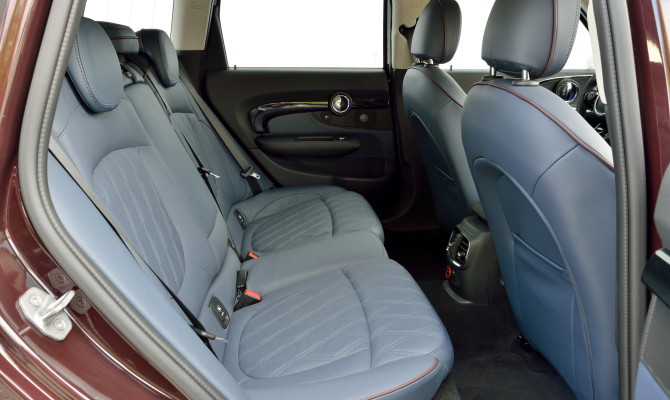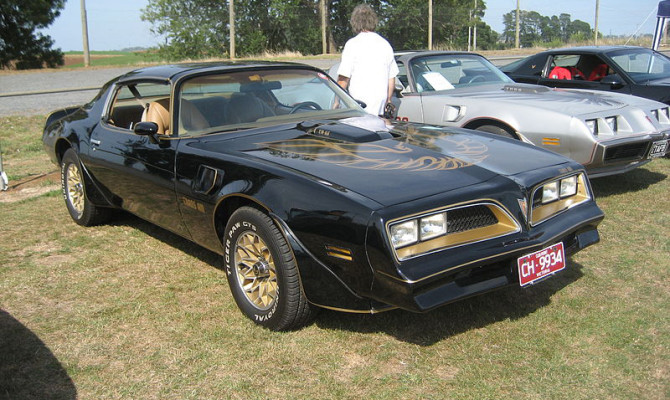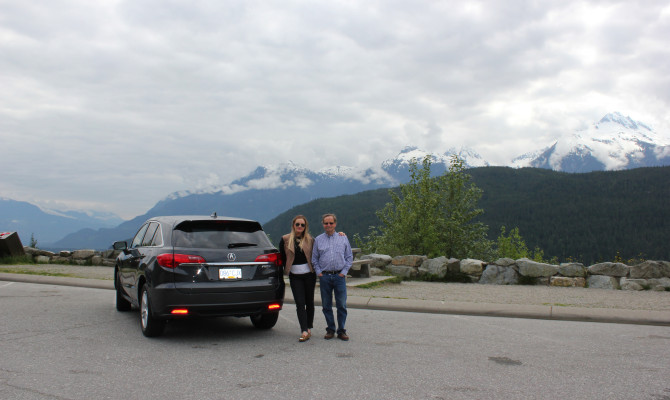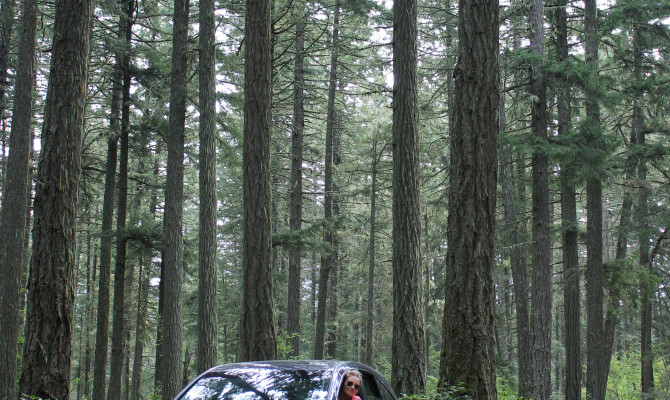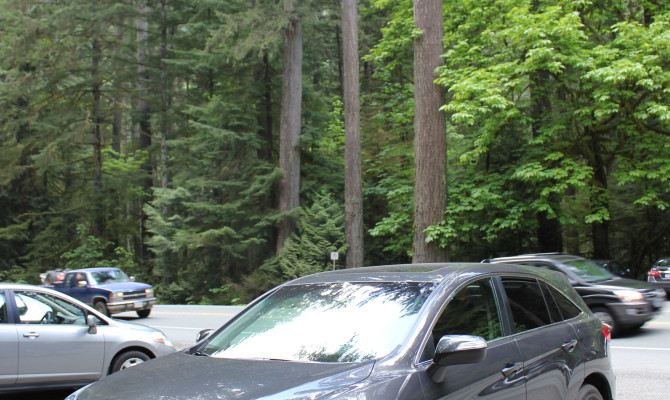Special to Driveway
“Newer Russian Ladas, Czech-made Skodas and the odd newer European nameplate are seen but most of the autos in Cuba are mid-fifties beauties.”
By Laura Ballance
‘Rookie’ might be overstating it, more like a novice.
I’ve been RV’ing before, but wouldn’t call myself an expert. Experts don’t have to read manuals to empty the sani dump. I, on the other hand, am an expert at reading the manual while directing my husband on that task. But I do love the idea of a hotel room on wheels that allows families to vacation almost any weekend of the year.
There is no doubt that as British Columbians, we live in one of the most beautiful and exciting regions of the world, perfect for exploring. So when my husband Rick and I, along with my 12-year-old stepson Kaleb, had the opportunity to head out in a 22-foot Adventurer from Fraserway RV in Abbotsford, we jumped at it.
The destination was set, three days at the Rockin’ River Music Festival in Merritt, but the journey was the real point of our adventure. British Columbia in summer – what’s not to love!
The upsides of RV vacationing are many. Today’s RVs are priced competitively – you can buy a trailer for under $20,000 and, of course, the sky is the limit for those mansions on wheels! And, of course, renting is a great option.
RVs allow families to take weekend vacations throughout the year and our three-day adventure was a perfect mini break. Complete with kitchen’s RVs are also a cost effective solution to constant restaurant eating during most hotel-based vacations.
Other huge pluses include having your own bathroom; room for video games and miscellaneous ‘must have’ teenager electronics and enough snacks to keep an almost teenager fed.
Surprisingly, driving an RV is easy. Our Adventurer is a Class C, which means drivers do not require a special drivers license, it’s essentially like driving a truck. The biggest things to get used to are the height and length of the vehicle, and giving yourself extra turning radius.
Packed up and ready to roll, we set out from Abbotsford heading east to Merritt. The drive was fantastic. British Columbia really is spectacular, and today’s RVs are equipped all the modern devices such as GPS and Bluetooth, making the conversion from my daily driver SUV to RV surprisingly easy.
We stopped in Hope for supplies and a coffee refill for me. There seems to be camaraderie within the RV community, and even on a short stop we met lots of fellow travellers headed further west.
The convenience of having your own bathroom, kitchen and all your personal items along for the ride makes impromptu stops and meandering routes very possible.
The ride to Merritt reminded me how lucky we are here in BC, the scenery is beautiful and seeing it roll by through the RV window made us all look a little closer – we weren’t commuting, we were vacationing.
Arriving at the family camping area of the festival I started to notice little tricks the expert RVers use. A rug just outside the door for dirty shoes. Storage containers that fit the RV shelves. Solar lights for the ‘patio’. I filed this information away because someday soon we’ll have an RV of our own.
The festival delivered as promised, great country music ranging from the country music of my teens (John Michael Montgomery) to today’s most popular artists (Sam Hunt). There were also some great Canadian acts like High Valley and local up and coming band Me and Mae.
It was a great weekend, and one that I would highly recommend. The best part of our trip was the freedom to do what we wanted, when we wanted.
If this piqued your interest, check out the Snowbird RV Show this weekend at Tradex in Abbotsford. It opens at 10 a.m. daily, closing at 9 p.m. and 5 p.m. on Sunday. Admission is $8 for adults, $6 for seniors, $5 for youths (13-19). Children 12 and under, free
The Family Pack – $20, includes 2 adults and up to 4 youths and the Multi-Day Pass is $10 adults or youth.
Fiat’s roadster aims to bring some Italian panache to the group that is known primarily for muscle cars (and trucks) here in North America. (more…)
Surprisingly, the smaller 2.5-litre inline 4-cylinder power plant delivers more wallop than the Ford-derived 3.7-litre V6 engine the previous model used.
By Newspress
Lovers of Vee Dubs turned out in their hundreds for the second Simply VW rally in the grounds of the UK’s National Motor Museum in Beaulieu.
The event attracted 425 Volkswagens from early Beetles, buggies, Karmann Ghias and campers, through Polos, Golfs and Jettas to modern-day Passats, panel vans and motorhomes.
Classic VW camper vans made a strong showing in the line-up, with their owners unfolding camping chairs, brewing up drinks on their stoves and enjoying the day’s sunshine.
Split-screen Type 2 campers were joined by the later, hugely popular ‘bay window’ versions, along with the squarer Type 25 and modern day T4, T5 and T6, while camper conversions by Dormobile, Westfalia, Devon and Autosleeper could also be seen.
Beetle fans were spoilt by rare early examples on show, from an immaculate 1953 oval window Beetle, to a highly modified split-window example. Visitors could see two examples of the stripped-out, military-themed VW 181, along with a pair of buggies and even an off-road Baja Beetle. Rare ‘Synchro’ four-wheel drive versions of the Golf Mk2 and Type 25 camper were parked up in the show, along with an astonishing VW XL 1 electric/diesel hybrid, one of only 250 built.
Popular with many visitors was a Transporter van, kitted out inside like a miniature 1950s American diner and even complete with a jukebox.
Simply VW is one of Beaulieu’s 2016 rally line-up, which includes Simply Japanese, Simply Land Rover and Simply Smart. For the full list of Simply rallies and other Beaulieu events, see www.beaulieu.co.uk/events or follow @Beaulieu_Hants on Twitter.
by Gord Scott
“The look is lower, longer, and wider but the front of the car remains resolutely smiley-face Mini.”
STOCKHOLM, Sweden.
It’s hard to stand out in this stylish city full of blondes, boats and boutique prices – but a shapely rear end helps.
The 2016 Mini Clubman’s caboose earned its share of stares during a recent debut on the cobblestone streets of Sweden’s capital.
This third-generation Clubman is the biggest Mini yet, taking the famous BMW-owned brand from “subcompact” to “premium compact” territory.
It would have been easy to mess this assignment up: Upsize an odd-duck subcompact model (the previous Clubman, with its bizarre fifth “suicide door” layout), add a host of roomy creature comforts, religiously adhere to the spunky personality of the car, and make it look like a Mini.
Thankfully, the Mini-ons were up to the task.
Read: ‘The 2016 Mini Clubman Is The Cool Mini For Grown-Ups‘ via Jalopnik
They started with a new chassis, shared with BMW’s front-wheel-drive 2-Series Active Tourer.
The look is lower, longer, and wider but the front of the car remains resolutely smiley-face Mini. As the elongated roof stretches over the four full doors and begins to taper, however, things become interesting. The new Clubman is pleasantly two-faced – the trademark “barn doors” combine with sheet-metal and taillight curves to give the rear an arresting “I’m-watching-you” look.
All of this design work has one aim – more cupholders. Well, not really. It’s about making it possible to fit in four of your friends or family, plus some luggage. (If you reduce that to four in total, the two in the back do, indeed, get to enjoy cupholders that spring from a fold-down armrest.)
Project leader Ernst Fricke proudly proclaimed that the Clubman can “be used as the first car in the family.”
The interior certainly lives up to the premium label, and the dash, steering wheel and heads-up display fairly bristle with infotainment connectivity. The presence of a real console (yes, cupholders and storage) comes courtesy of the use of an electric parking brake, and adds unprecedented (for Mini) elbow room. Lots of very cool LED lighting would help ward off some of the inevitable blues brought on by long, dark Swedish winters.
The front seats (electric is an option) offer just the right amount of bolstering for go-kart moves, and legroom is fine for an almost-six-footer. A short ride aft revealed almost un-Mini-like room for backseat drivers, although road noise and roughness seemed more pronounced than up front.
Trunk volume with the rear seats folded down is listed at about 44 cubic feet (compared to the Volkswagen Golf Sportwagon’s cavernous 66.5 cubic feet), and there is an optional three-way splitting rear seat back to juggle loads.
The barn doors allow plenty of access for those Ikea boxes, and get even more fun with the optional easy-opener feature. With the key in your pocket, one kick under the rear bumper opens the right door, another kick opens the left. Chances are most shopping trips will only require a single kick at the Clubman’s can to stow the stuff.
The Clubman shares engine choices with the rest of the Mini clan; a base three-cylinder with 102 horsepower, the Cooper’s three-cylinder at 136 horsepower, or the Cooper S’s four-cylinder with 192. Transmission choices are the six-speed manual, or a new eight-speed automatic. BMW’s usual arsenal of road-conquering technologies are either built in or are available.
The Stockholm area presented a few challenges. Firstly, it is city of 14 islands, with hundreds more nearby. This means a lot of water, which means a lot of bridges – and a good number of ferries.
The rolling, lake-studded Canadian Shield-like landscape northeast of Stockholm does present inviting stretches – but the tempting country roads are home to the very vigilant police force, and dreaded Blue Meanies.
Once the Clubman broke free from these constraints, its inner go-kart was revealed. There was never any doubt that there was more Mini than usual to throw around, but fun could be summoned – especially with Sport mode selected. The manual certainly kept it real, but the automatic really needed to be in its own Sport mode to simulate the experience.
Verdict:
This new six-door strikes a nice compromise between Mini mania and multitasking. Like the car, the families who take delivery after the Clubman shows up in showrooms early next year are growing out, not up. The Mini Cooper Clubman starts at $24,990, the Mini Cooper S Clubman at $28,990. Of course, these being Minis means infinite (almost) options and individualization, which would take you north of that pretty quickly.
“Everything that matches the 2016 Tucson to an active lifestyle applies just as meaningfully to empty nesters and retirees.”





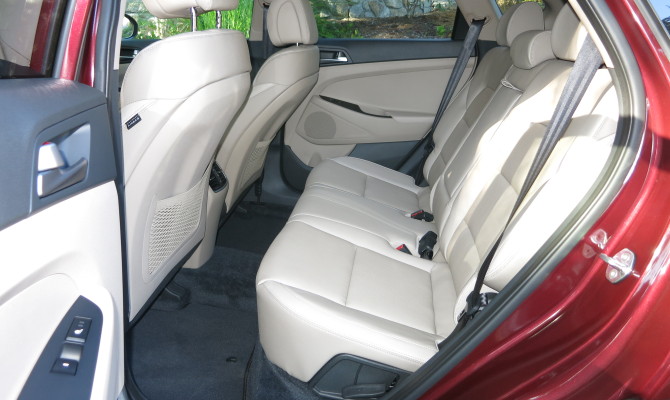

by Rob Rothwell
Halfmoon Bay, B.C.
Hyundai’s all-new compact Tucson crossover is aimed squarely at pre-family buyers living active lifestyles.
But I’ve got a tip for those drifting into a greyer reality; it’s an ideal vehicle for you too.
Everything that matches the 2016 Tucson to an active lifestyle applies just as meaningfully to empty nesters and retirees, whether their activity includes walking the pooch or sailing above the surf on a kiteboard.
While Hyundai’s advertisements for the Tucson feature square-jawed athletic dudes with defined stubble and bronze skin, it doesn’t mean they don’t intend to sell the snappy crossover to folks like me, on the dark side of fifty.
For marketing purposes, my likeness won’t favour sales. You see, I’m told by those in the biz that you can sell a young man’s car to an old man but not the other way around; this applying equally to women.
While my future as a sales prop is only slightly more certain than winning Lotto Max without buying a ticket, I enjoyed my day behind the wheel of the new Tucson. The meandering route allowed my driving partner and me to explore the many bays and coves along British Columbia’s idyllic Sunshine Coast.
It’s in this sort of environment that the 2016 Tucson will have older buyers admiring its exceptional level of operational refinement and day-long serenity. It delivers a near-premium driving experience, though not a particularly exciting one.
A smooth, absorbent ride was clearly more the priority than searing performance in the corners and on the straightaways, and that’s fine by me.
In redesigning the Tucson, Hyundai engineers focused on all aspects of quality in addition to refinement and styling. The latter of which has given us a vehicle longer, lower, and wider than its predecessor.
Aboard the Tucson, one is immersed in a well thought-out cabin transmitting a sense deportment that was sadly lacking in the former execution. Today’s version is as accurately assembled as the best of them in the fiercely competitive compact crossover segment.
While Hyundai’s soft-touch surfaces and intuitive architecture are praiseworthy, it’s the larger slice of ‘content’ pie which they serve that sets the Tucson apart from its contemporaries under competing nameplates.
“More for less” has always been a Hyundai hallmark, and the Tucson adheres to the credo with its outstanding list of standard and near-standard features, including safety tech such as Blind Spot Detection with Cross Traffic Alert, Lane Departure Warning, and Autonomous Emergency Braking with Pedestrian Detection.
Thoughtful touches include heated front and rear seats, a heated steering wheel, dual-level cargo floor, and a remarkably convenient Proximity power liftgate. The latter opening by merely sensing the key in proximity of the liftgate for three seconds.
No longer can the Tucson be considered an entry-level crossover despite its modest across-the-board increase of roughly $400. The upscale climb includes the availability of an optional 1.6L turbocharged I-4 GDI engine harnessed to a segment-exclusive 7-speed dual-clutch automatic transmission (DCT).
The turbocharged mill fortifies the AWD Tucson with 175 horsepower and 195 lb.-ft. of torque, and is the obvious choice for passing-lane adherents. The base 2.0L I-4 GDI (required with FWD) is the powerplant of choice for the modest. It shells out 164 horsepower and 151 lb.-ft. of torque through the auspices of a six-speed autobox.
Three drive modes – Eco, Normal, and Sport – enable drivers to tweak engine response, shift mapping, and steering resistance, to correspond with the mood of the day. I really didn’t find a need for Sport mode, largely enjoying the Normal setting most.
After spending a day administering the turbocharged and non-turbocharged Tucson variants, I departed the Sunshine Coast with the view that Hyundai has raised the bar for refinement, comfort, and value in the compact crossover segment. Albeit, handling dynamics and sheer athleticism may still belong to the likes of Mazda’s CX5.
Specs:
Pricing FWD: $24,399 – $26,999
Pricing AWD: $31,549 – $39,599
Base engine: 2.0L I-4, GDI 164 hp. / 151 lb.-ft. torque
Optional engine: 1.6L turbocharged 1-4 GDI, 175 hp. / 195 lb.-ft. torque
Combined city/highway fuel economy: base engine 9.0L/100km, optional engine 9.2L/100km
Seating capacity: 5
Cargo capacity: 877 litres
by Grant Stoecker
The ‘Malaise Era’ was the antithesis of the muscle car heyday that existed merely a year before its start in 1973.
It was a dark period characterized best by underwhelming engines, EPA restrictions, and questionable styling. In the Malaise Era you could run your new Cobra through the gears without raising the attention of local law enforcement. The Malaise era wasn’t without hope, and the era saw production of a few diamonds in the rough. Here are our picks.
1. 1977 Pontiac Firebird Trans-Am Special Edition
Call it the Burt Reynolds Effect, but the 1977 Trans-Am is still a kick-ass ride. Featured in 1977’s top grossing film, Smokey and the Bandit, the black and gold Trans-Am had as much star power as the moustachioed Reynolds.
The power for the T/A came from a 6.6 litre V8, producing a disappointing 200 horses for 1977, a far cry years prior. It didn’t seem to matter as you cruised down main street, however, T-Tops in the trunk and blasting Journey through the 8-track. The menacing looks of the Trans Am seemed to be more than supple to erase any memory of the days of muscle car past, as other drivers stared in awe from the seats of the latest econo-box.
2. 1981-83 DeLorean DMC-12
The DMC-12 was the car from the future that no one had asked for, but everyone wanted.
Built by an automotive dream team consisting of John DeLorean, Colin Chapman, and Giorgetto Giugiaro, the DMC-12 was built to be a futuristic luxury coupe with a 200 horsepower Wankel rotary engine and price of $12,000. Execution of the concept missed the mark, and the production DMC-12 drew its underwhelming 130 horsepower from a Renault 6, and was sold for $36,000.
Despite this, the DeLorean secured its spot in the hearts of people around the globe as Doc Brown’s time machine in the 80’s mega-franchise, Back to the Future. If only they had come stock with the flux capacitor.
3. 1983-86 Audi Quattro
Germany continued to make fast cars throughout the malaise era, such as the BMW M1 and Porsche 930, but Audi created a completely new segment of car with the introduction of its all-wheel drive performance car, the Audi Quattro.
The Quattro was originally introduced to the European marketplace in 1980, but did not make its way stateside until 1983. With power from its turbocharged five-cylinder going to all four wheels, the Audi Quattro became a rally car legend, and the production models looked the part with its noticeable fender flares, Audi graphics, and BBS alloy wheels. The car was a head of its time, and only 664 were ever sold in the US before Audi discontinued it stateside in 1987.
4. 1974-76 Bricklin SV-1
Canada’s primary contribution to the malaise era was the brainchild of American millionaire Malcolm Bricklin, who dreamt of making the world’s safest sport car, naming his creation the Safety Vehicle One, or SV-1. The SV-1 had a smattering of safety features ranging from an integrated roll cage to safety bumpers, and even lacked an ashtray to discourage drivers from smoking. The Bricklin was powered by an AMC or Ford V8, and was rated favorably at the time against its competitor, the Corvette. Despite initial reviews, the car was notorious for poor build quality, and the engine was prone to overheating due to its small radiator. Bricklin went into receivership in 1976, and the SV-1 was dead in the water.
5. 1987 Buick Grand National/GNX
The Buick Grand National was not your grandfather’s Buick. Often referred to as Darth Vader’s car due to its all black paint scheme, the Buick Grand National was powered by a Turbocharged V6, and was rated for only 245 horsepower. The Grand National Experimental, or GNX, was the baddest of the Grand Nationals, and after rolling off the production line, it was sent to the mad scientists over at McLaren Performance, who modified the engine to be able to run 0 to 100 m/h in a mere 4.3 seconds, a figure impressive by modern standards.
Grant Stoecker writes for Hagerty Insurance. Hagerty is the world’s leading specialist provider of classic car and boat insurance. Learn more at hagerty.ca
by Hayley Thomas
“The pleasure of cruising the coastline was amplified by the views offered from the RDX’s raised stance.”
Exploring beautiful British Columbia for the first time should enjoyed in the comfort and views offered by a high-end sport-utility vehicle.
Having recently moved to the province from Nova Scotia, it was time for my parents to make their first trek to this side of the country, so the pressure was on to find an appropriate vehicle to show off my new ‘home’.
A 2015 Acura RDX was available in the media fleet: Its 273-horsepower, 3.5 litre V-6 engine, along with a 6-speed automatic transmission, persuaded me it would get us where we needed to go.
My parents, Nadine and George Thomas, started their trip in Vancouver, in the heart of the city. On the first evening I offered to take them for a drive around town to show them the hot spots. The RDX offers soft leather seats featuring 8-way power adjustability, coupled with a very sleek and stylish exterior, which incorporates an aerodynamic efficient body. To say we felt cool driving it through the city, with music pumping from the 360-watt audio system, is an understatement.
Within a few days, we were on our way to explore Salt Spring Island. At this point, it was time for my father to get his hands on the wheel to see what the RDX was “really made of.”
Our joint verdict is the RDX offers great handling with an agile yet secure feel – the vehicle integrates Amplitude Reactive Dampers that analyze the driver’s input against the road conditions to adjust the drive to the road you’re travelling.
Like most dads, mine never needs directions. However, when we were on our way to the Saturday Market we “somehow” ended up on a dead-end back road. Luckily, the GPS navigation system gave my mum a much-needed break from map reading. The system has the ability to pinpoint your location almost anywhere in North America, and is equipped with two options of relaying your route: either by voice or a real-time moving map. This feature is a sure-fire way of ensuring you get to where you need to go, while removing any second-guessing from the equation.
We continued our adventures on Vancouver Island from Nanaimo through the Vancouver Island mountain ranges. At this point, I once again took over driving without the hassle of re-setting my seat preferences; the settings were conveniently programmed into the seat position memory. Once back on the road I really put the pedal to the metal – the acceleration was brisk and delivered plenty of power. With that much power, typically comes a hefty bill at the gas station and not because of all the ice cream sandwiches purchased there. However, a comparison check shows the RDX offers fuel efficiency is rivalled by very few luxury SUVs. Given the often-steep gas prices we see these days, the RDX’s fuel economy on average is 10.6 litres/100 km, allowing motorists to enjoy summer drives guilt-free.
The pleasure of cruising the coastline was amplified by the views offered from the RDX’s raised stance. Driving as the sun dipped below the horizon meant it was time to open the moonroof. The moonroof is easily operated with a one-touch power mechanism along with a visor that actively reduces the vibrations and noise associated with having a window open, allowing for a smooth and noise-free ride.
Last, but certainly not least, I had long been awaiting my parents’ arrival with the anticipation of finally properly learning how to parallel park. Much to my surprise, the Acura RDX provides all of the tools required to successfully complete this complex and sometimes dangerous (when I’m behind the wheel) task. The vehicle includes a multi-angle rear-view camera along with reverse tilt dual mirrors that provide curb views. I can now parallel park in the city without chagrin – hold onto your curbside parking spots, fellow motorists.
2015 Acura RDX
Base price: $41,390
Price as tested, Tech edition: $44,390 – plus $1,995 freight & pdi
Recent Comments
- { Enjoyed your Forest of Bowland in the BMW X5M, particularly the photo of the BMW in front of the main part of Stonyhurst College where... }
- { Bantam designed the Jeep, not Willy's or Ford. The American military gave the original Bantam prototype to Willys and Ford to copy. There is plenty... }
- { All Escalades come with a 6.2-lilter V8 engine that produces 420 horsepower. A six-speed automatic is the only transmission offered and drives the rear wheels.... }
- { Alexandra is an excellent journalist. }
Popular Posts
- Journey to a ‘Sparkling’ Luxury Okanagan Resort “Four lucky readers will put a Dodge Journey’s weekend-...
- The Need For Speed: Hike Those Highway Limits More than half of those polled believe the province sho...
- Drives-U-Crazy… Erratic drivers. An early morning drive from Kelowna to Vancouver is nor...
- Readers Respond: The Pros and Cons of Increasing B.C. Speed Limits Increasing the speed limits will only increase risk to...
- Honda CR-V Review: The Compact Crossover To Get Things Done The CRV is a very stylish and aerodynamic crossover veh...








